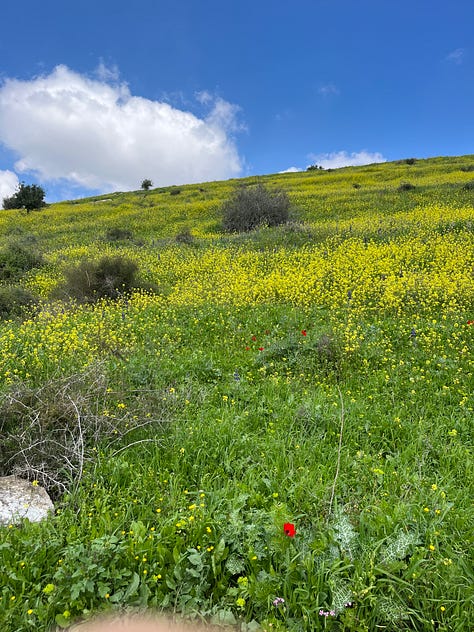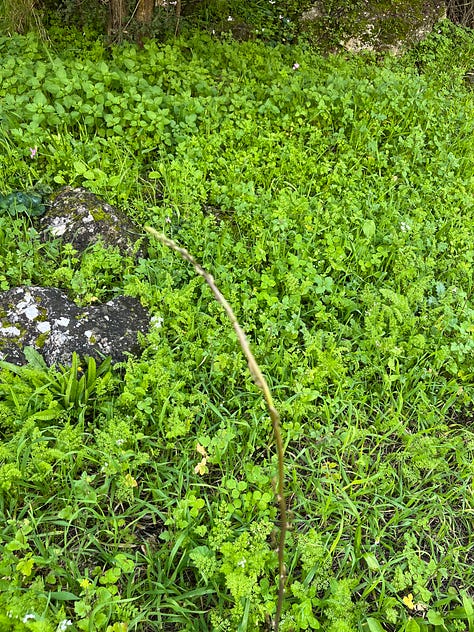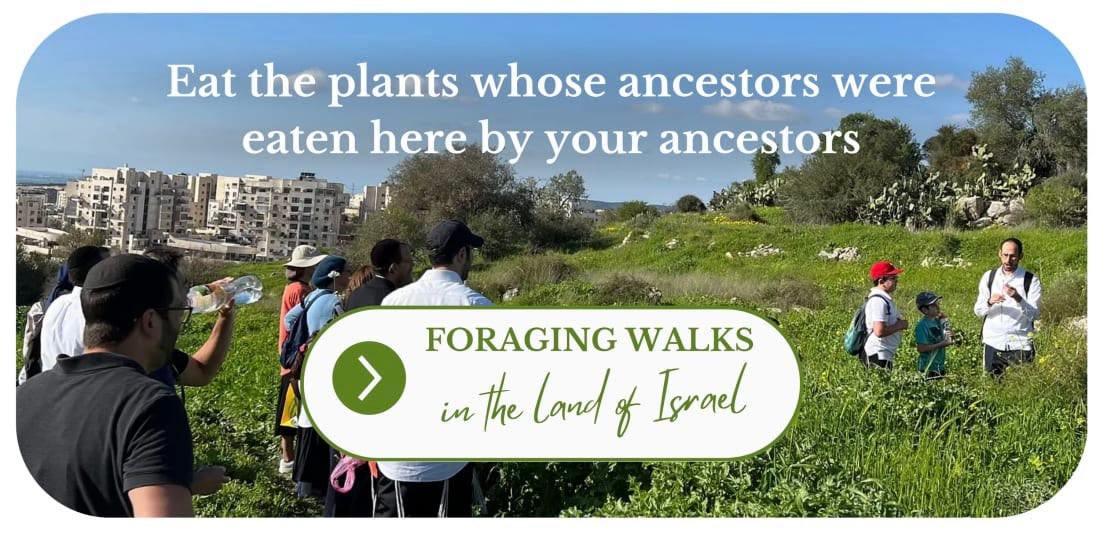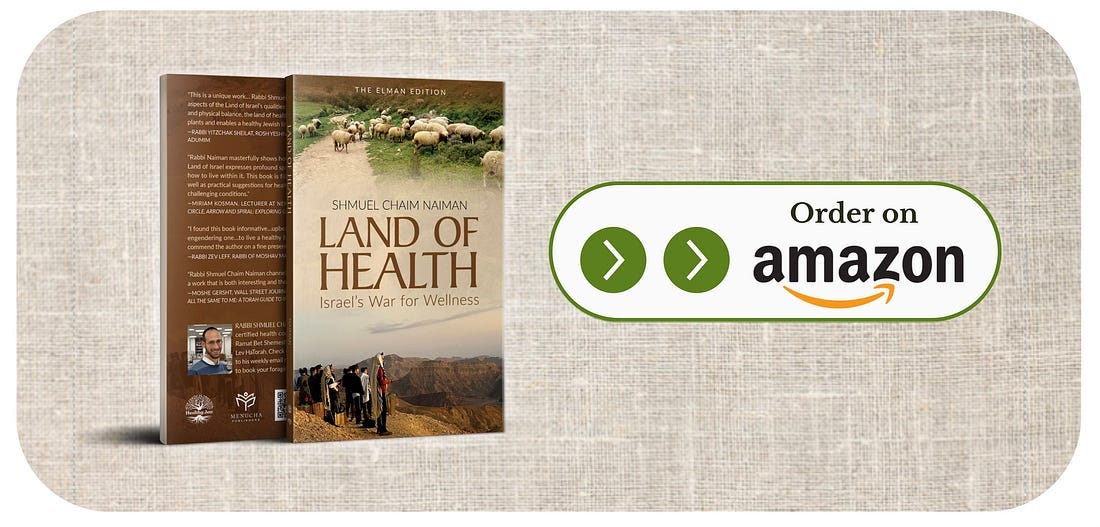On Lupine Hill, There Is So Much More Than Lupines
Join me this week for an insider's view of one of Israel's renowned natural attractions.

Dear Healthy Jew,
If you live anywhere near Bet Shemesh, or have visited here in the spring, there’s a good chance you know about Lupine Hill, whose local Hebrew name is Givat Haturmisim.
This hill sits right to the south of Ramat Bet Shemesh, overlooking the Elah Valley where David battled Goliath some 2800 years ago. Apparently this place was called then Socho, and the Jewish camp watched the dramatic standoff from its flat plateau.
There’s lots of history here at Givat Haturmusim - and lots of lupines. When the lupines bloom (around now), both locals and tourists flock here. It’s an important place that offers great views of the Shfelah.
I’m in favor of anything that will bring people out to Natural Israel.
But Givat Haturmusim’s trademark lupines are only a little bit of what’s on this hill - and many more hills throughout Natural Israel. And the purple species on this hill are a protected flower, so we can’t forage them. Even if they weren’t, you’d anyways need to boil them 3-7 times to remove their toxins.
So when we forage this week around Lupine Hill, we’ll look for the many other plants whose ancestors were eaten by our ancestors as they sat here watching David square off against Goliath.
Early spring’s three most common edible annuals line the trails: milk thistle, mustard, and mallow (known in Israel as chubeza).
A few feet away, hiding in the shade, we’ll find packs of the slightly-less common treasures of the season: wild garlic (far milder than the store-bought variety), Egyptian campion, and nettles.
If we’re look carefully, with just a bit of luck we’ll pick up some delicious, juicy asparagus sprouts.
And so much more.
Take a look:



(I got the name confused in this clip: it’s tziparnit, not chartzit. The common English name is Egyptian campion.)
When the world is saying with the failed spies that Israel is “the land that eats its inhabitants,” we’ll respond with Yehoshua (Joshua) and Calev (Caleb): “the land is very, very good!”
Let’s go foraging!
Thank you for reading Healthy Jew.
Here are 2 great paths to continue the journey:
Also check out this intro and index to explore hundreds of posts about our 3 Healthy Jew topics: Wellness with Wisdom, Land of Life (Israel), and Sensible Spirituality.
Finally, always feel free to reach out here with any comments, questions, or complaints:
I look forward to hearing from you!
Be well,
Rabbi Shmuel Chaim Naiman






